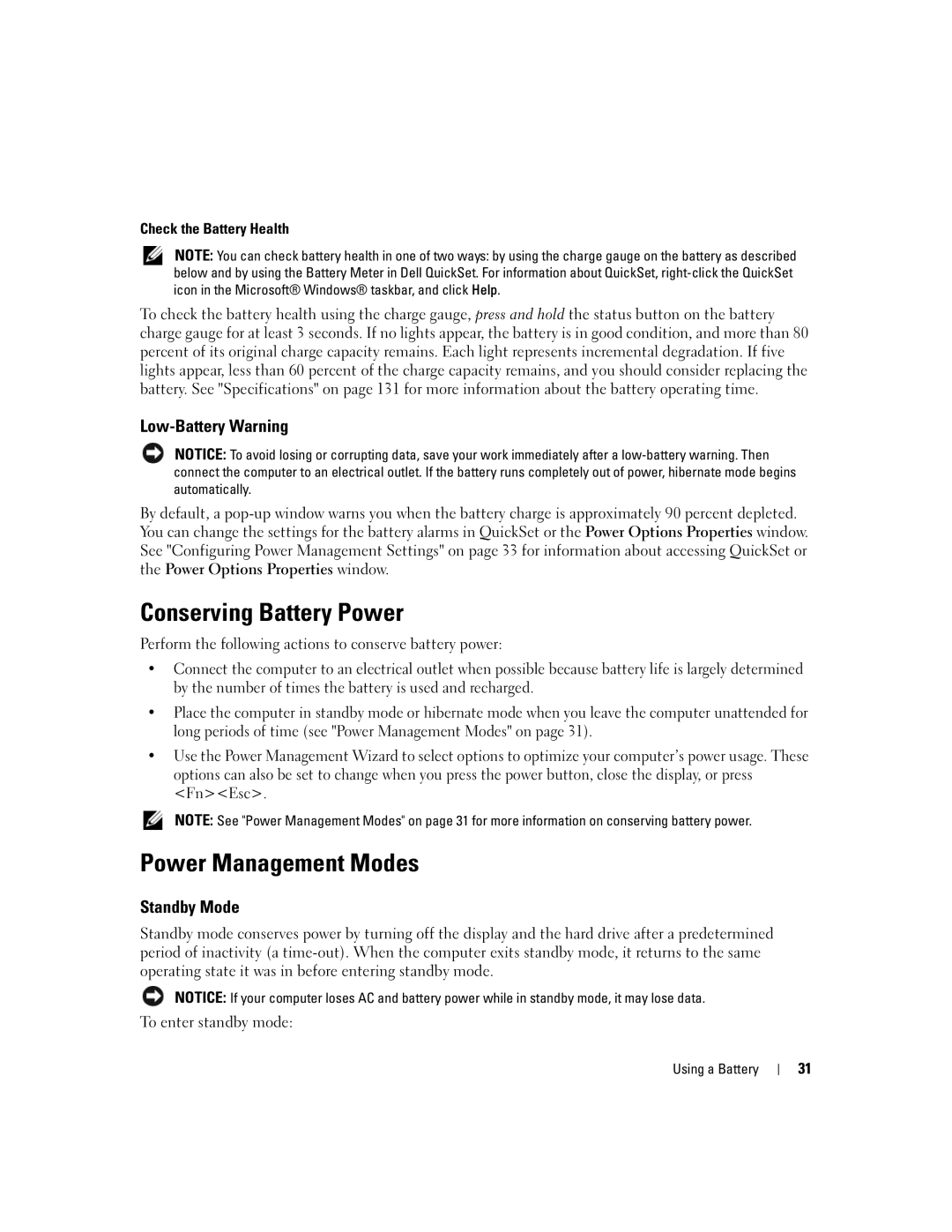
Check the Battery Health
NOTE: You can check battery health in one of two ways: by using the charge gauge on the battery as described below and by using the Battery Meter in Dell QuickSet. For information about QuickSet,
To check the battery health using the charge gauge, press and hold the status button on the battery charge gauge for at least 3 seconds. If no lights appear, the battery is in good condition, and more than 80 percent of its original charge capacity remains. Each light represents incremental degradation. If five lights appear, less than 60 percent of the charge capacity remains, and you should consider replacing the battery. See "Specifications" on page 131 for more information about the battery operating time.
Low-Battery Warning
NOTICE: To avoid losing or corrupting data, save your work immediately after a
By default, a
Conserving Battery Power
Perform the following actions to conserve battery power:
•Connect the computer to an electrical outlet when possible because battery life is largely determined by the number of times the battery is used and recharged.
•Place the computer in standby mode or hibernate mode when you leave the computer unattended for long periods of time (see "Power Management Modes" on page 31).
•Use the Power Management Wizard to select options to optimize your computer’s power usage. These options can also be set to change when you press the power button, close the display, or press <Fn><Esc>.
NOTE: See "Power Management Modes" on page 31 for more information on conserving battery power.
Power Management Modes
Standby Mode
Standby mode conserves power by turning off the display and the hard drive after a predetermined period of inactivity (a
NOTICE: If your computer loses AC and battery power while in standby mode, it may lose data.
To enter standby mode:
Using a Battery
31
